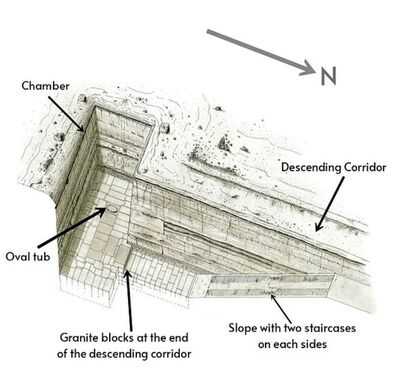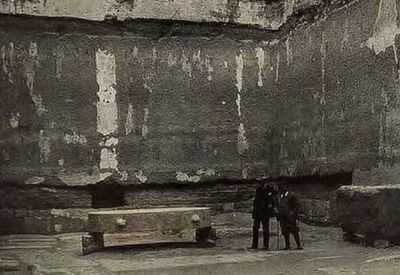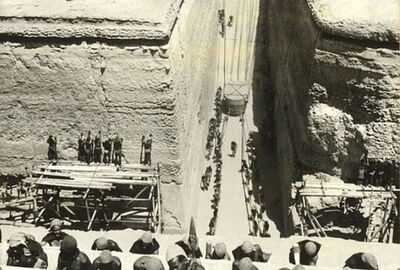The Pyramids of Giza stand in the Egyptian desert as one of the most incredible examples of ancient architecture and the only surviving one of the Seven Wonders of the Ancient World. Every year, millions of tourists from across the globe descend on the UNESCO World Heritage site - 15.7 million in 2024, according to some reports - to catch a glimpse of the complex. However, few realise that there is a mysterious, but no less remarkable, site just three miles away.
Zawyet El Aryan, dubbed Egypt's Area 51, lies between Giza and Abusir and is also home to an ancient necropolis containing two major pyramid complexes. Italian archaeologist Alessandro Barsanti first excavated the site in the early 20th century, uncovering an incredible T-shaped pit carved into solid limestone, nearly 100 feet deep and lined with massive granite blocks. At the centre of one of its chambers sits a large, oval-shaped granite tub, which Mr Barsanti reported contained traces of an unknown substance, which has since been lost to history.

However, World War 1 and Mr Barasanti's death in 1917 meant that for decades, hardly anyone knew of its existence, as the military sealed it off and used it as a base, hence its new nickname as Egypt's very own Area 51. Access to the pyramids has been restricted since 1964.
Many Egyptologists believe Zawyet El Aryan was intended to be a pyramid that was never completed, though no superstructure was ever built above the pit.
To this day, the site's true purpose remains a mystery. However, graffiti discovered inside includes the word "Seba", interpreted by some researchers as the ancient Egyptian term for a "gateway to the stars".
The Layer Pyramid is believed to have been built during the reign of Pharaoh Khaba in the Third Dynasty, dating back to approximately 2670 BC. While its core remains largely unexplored, the surrounding area boasts large mastabas, which are believed to have served as dwellings for high-ranking officials.

The Unfinished Northern Pyramid, sometimes referred to as the Pyramid of Baka or Bikheris, meanwhile, is believed by some archaeologists and Egyptologists to belong to the early or mid-4th Dynasty, dating from 2613-2494 BC. However, the true identity of its builder has never been determined. One of the intriguing aspects of this structure is the presence of numerous inscriptions in black and red ink within its chamber and descending stairway.
The area of Zawyet El Aryan is surrounded by a total of five cemeteries dating to the 1st Dynasty, 2nd Dynasty, late 3rd Dynasty, 18th Dynasty and the Roman Period. Of these cemeteries, only the one dating to the late 3rd Dynasty contains large tombs, of which are four mudbrick mastabas - a flat-roofed rectangular structure. It is thought that this is be expected of the necropolis surrounding the pyramid of a pharaoh, the large tombs being those of the royal family and court officials.
Just over 600ft north of the Layer Pyramid lies a huge mastaba, today known as "Mastaba Z500", which yielded eight marble bowls inscribed with the serekh (hieroglyph) of king Khaba.
Today, no excavations are allowed at Zawyet El Aryan, meaning little progress can be made on understanding its significance.
You may also like

Martin Brundle absence explained as F1 fans make Mexico GP grid walk feelings very clear

Trigger Point recap: What happened in season 1 and 2 ahead of new series?

Bananas stay fresh without browning for a month with 1 unusual storage method

Best raincoats to protect against downpours that are fashionable and functional

Warning issued to anyone cleaning TV screen with 1 common kitchen item







